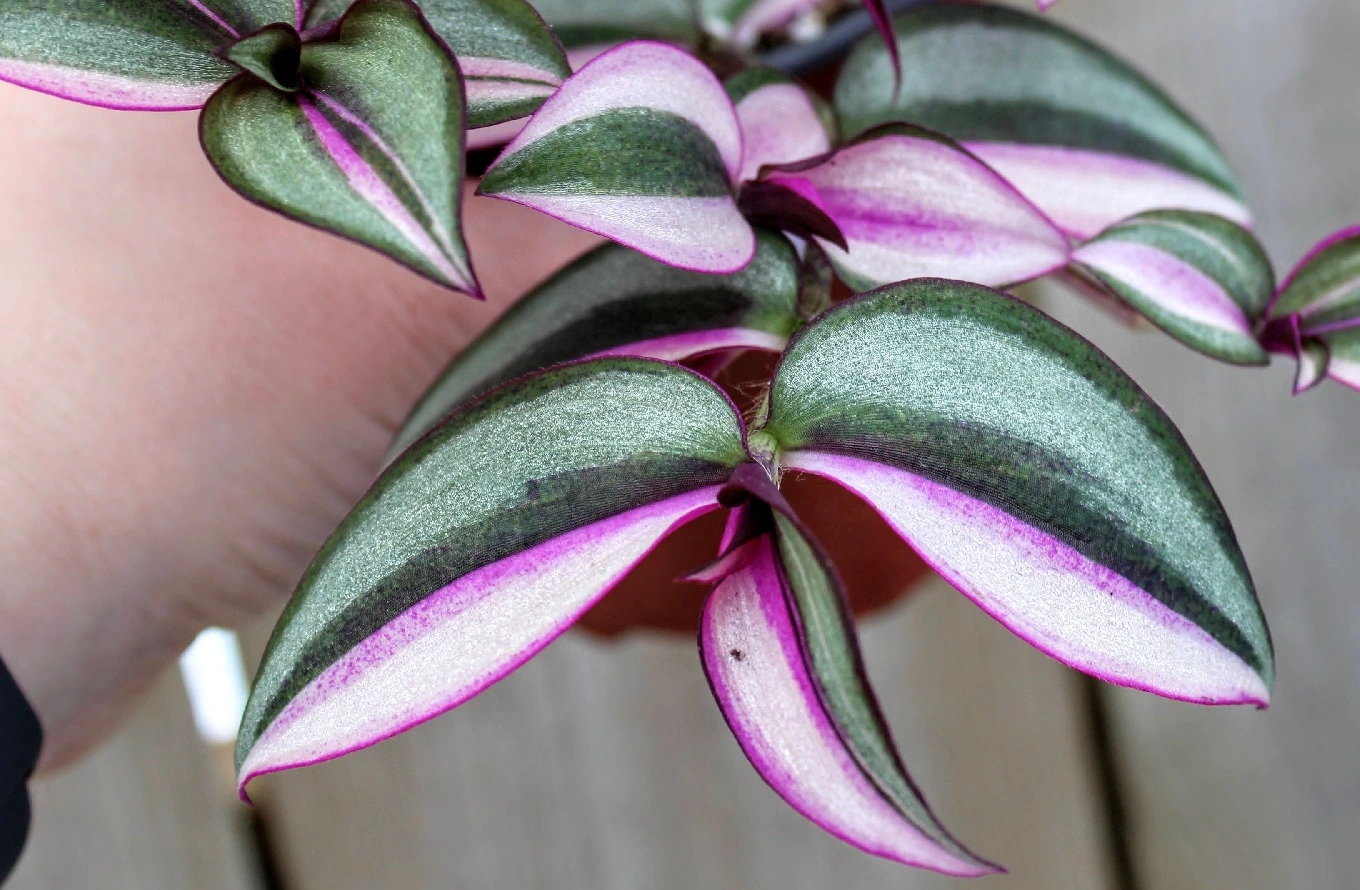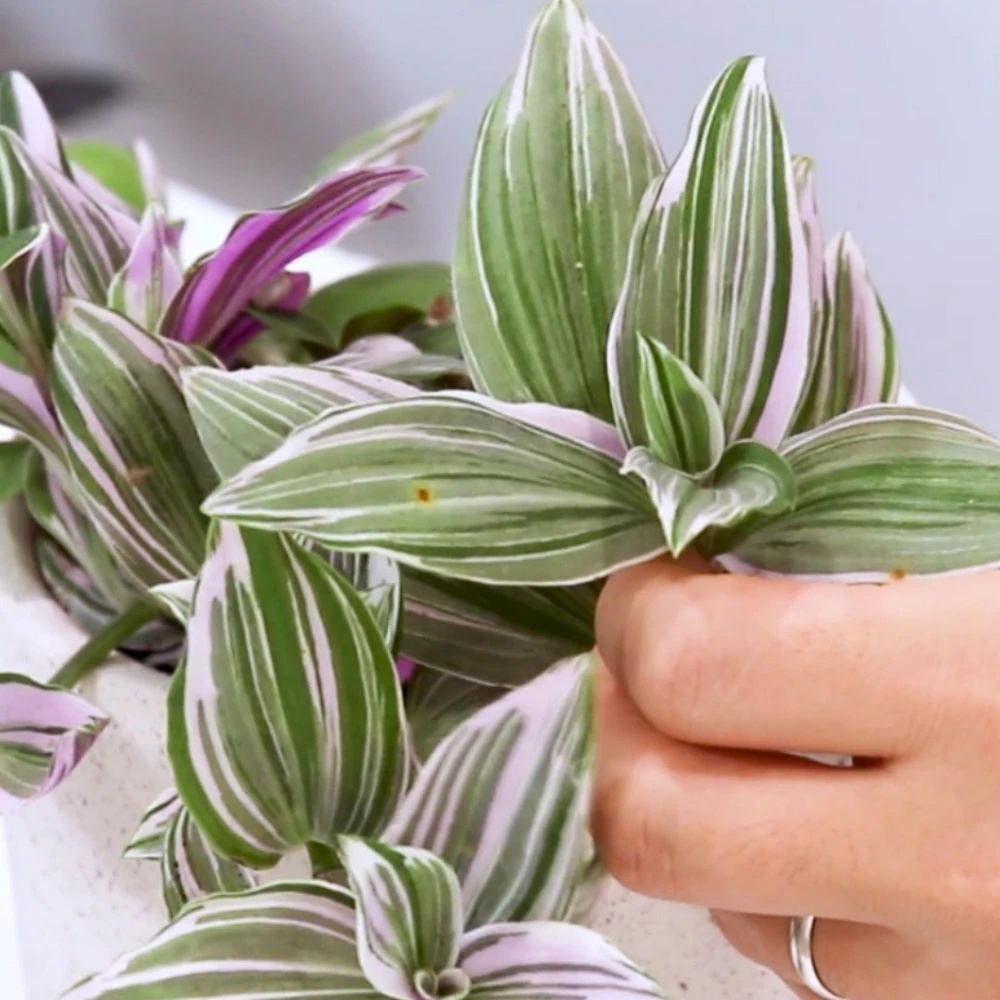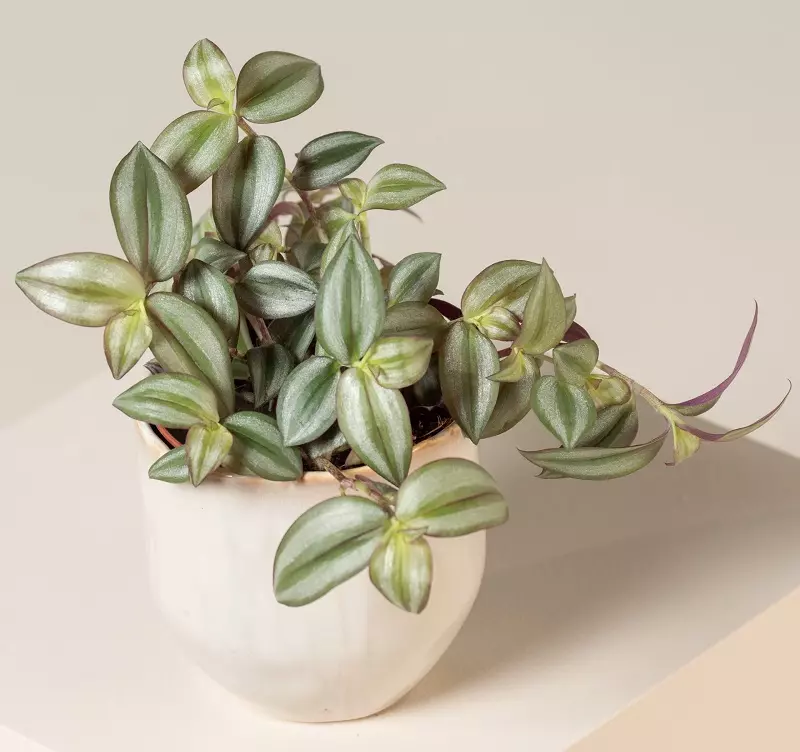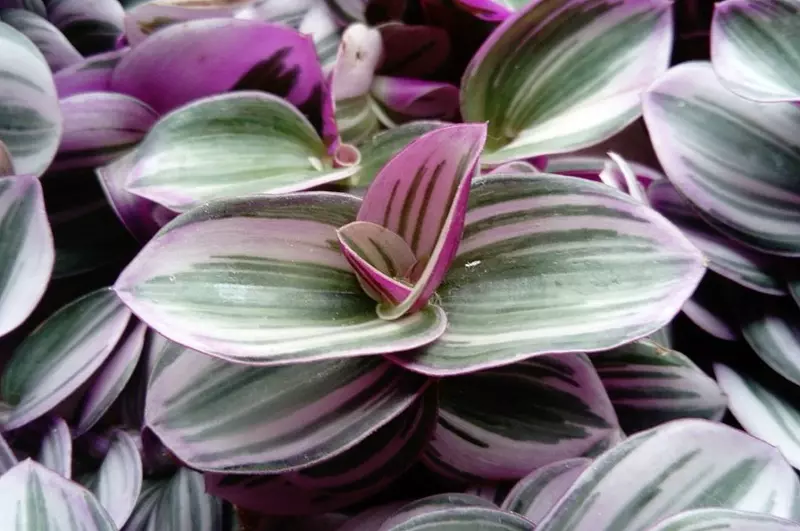Spiderwort - All About Tradescantia Plant Care, Varieties and Pests
Spiderwort is a unique houseplant which looks incredible in home interiors. It's not difficult to grow at all. Thanks to this, even beginner plant enthusiasts don't have any problems with this plant. Are you wondering how to care for a spiderwort and whether it needs any additional treatment? Check the most important information on this beautiful species.

Spiderwort – what kind of plant is it?
Spiderwort, or Tradescantia is a plant from the dayflower family. It’s often referred to as an inchplant, or Tradescantia zebrina. Its name is a result of the looks, but also a gardener – John Tradescant – who worked at the royal court of King Charles I of England, Scotland, and Ireland.

Spiderwort origins
The plant grows naturally in Guatemala and Mexico. It can be encountered in the regions of Belize and Panama. Tradescantia also grows in some areas of the Caribbean Islands. It forms shrubbery in rain forests, mostly on rocky areas and in a slight shade. In the rest of the world, it’s known as a houseplant.
If you decide to buy a spiderwort, remember that it prefers warmth because of the region it comes from. It means it doesn’t tolerate low temperatures.
In natural conditions, the plant is grown as a ground cover. In such a case, the stems can reach up to 50 cm (1.6 ft) in length. As a houseplant, spiderwort is much smaller.

The most popular spiderwort varieties
There are several varieties of tradescantia. Here are the most popular ones:
- tradescantia tricolor – the plant has beautiful leaves of strong and multiple colors – with pink-red, green, cream, and silver stripes on them,
- tradescantia pallida – also known as purple heart, it has larger red-brown leaves with characteristic silver stripes on the edges,
- tradescantia zebrina – commonly referred to as inchplant, it has narrow leaves and silver stripes on the edges, the middle of the leaves is brown.
Spiderwort – care and needs
Because of its original habitat, spiderwort is not resistant to cold, so it’s typically planted in pots. The plant is very easy to take care of, so everyone can grow it.
A good location is the most important element of spiderwort care. Full sun is the best option. But if you have no such possibilities, don’t worry. Spiderwort can also grow in a delicately shaded place. But note that the amount of light provided affects the color of the leaves.
The plant dislikes drafts, so a spot next to a frequently opened window is not the best choice. But you can put the pot outside in summer. It’s a perfect balcony or patio decoration.
Tradescantia doesn’t have any special requirements about the soil it grows in. It tolerates any type of soil. You can use ordinary garden soil or universal potting mixes available in most garden stores.
Make sure to trim the plant regularly. Remove tops of branches – thanks to this, your spiderwort will grow faster and more intensely. Cut the stems right above the leaves.

Spiderwort plant – watering and frequency
Spiderwort is a tropical plant, which means it requires a particular level of moisture. Sometimes it’s difficult to increase humidity in the entire room, so make sure to water the plant regularly and mist its leaves.
Regardless, avoid standing water in the plant’s pot. It might harm tradescantia and lead to root rot. Also, remove the excess water from the saucer, so the plant doesn’t absorb too much.
Limit watering in winter. Water spiderwort only when the upper layer of soil in the pot dries.
Does spiderwort need fertilizing?
Spiderwort is a plant that requires intense fertilizing, especially during the vegetation period. Use fertilizer mixed with water from the end of March until the beginning of September. Water the plant with such a mix once a week. Don’t stop fertilizing during winter, but limit feeding to once every four weeks.
Spiderwort – propagation
Spiderwort cannot be propagated from leaves, as some plants allow. But you can retrieve cutting from the tops of the plant. Place them in water with special rooting hormone. They should quickly become suitable for planting in a container. Water rooted seedlings with small amounts of water.

Spiderwort – diseases and pests
Drying tops of the plant is the most common problem of spiderwort. It might be caused by improper maintenance of the plant and too little moisture in the soil. Dry air and not misting the leaves are also probable causes.
Round or oval grey, brown, or dark brown spots on the leaves are signs of another, but rarer disease. The spots gradually die and lead to wilting of the leaves. If you notice these symptoms, make sure to remove the infected leaves, and spray the entire plant with an appropriate chemical product.
Aphids are the most common pests attacking the plant. They can be easily eliminated by spraying them with insecticides. Other insects that might attack spiderwort include spider mites and thrips. They appear especially when the plant has not enough nutrients. Make sure to care for the plant properly and fertilize it regularly.

📍 What does spiderwort look like?
Spiderwort develops tiny flowers. But its leaves are the biggest decorative element of the plant. They have amazing colors and patterns. Depending on the location where a spiderwort grows, the leaves might get different colors. It also depends on the variety of the tradescantia you pick.
📍 How to care for spiderwort?
Spiderwort needs appropriate care, but it's not very difficult. Steady, moderate moisture in the pot is the basic element. The leaves have to be regularly misted. The plant needs access to indirect sunlight which makes the leaves more colorful. Regular feeding of the plant is also important.
📍 Where to buy a spiderwort?
Spiderwort is a popular plant. You can purchase one in basically any garden store. What's more, it's often available in supermarkets with a garden section. If you decide to buy a plant there, make sure to check it carefully for signs of diseases or pests.
📍 How to keep spiderwort in a good shape?
Taking care of spiderwort plants requires mostly regular watering and fertilizing. If the air in the room is too dry, make sure to mist the plant's leaves. Also, the temperature shouldn't be too low – spiderwort is a tropical plant and likes warmth.
Featured articles




